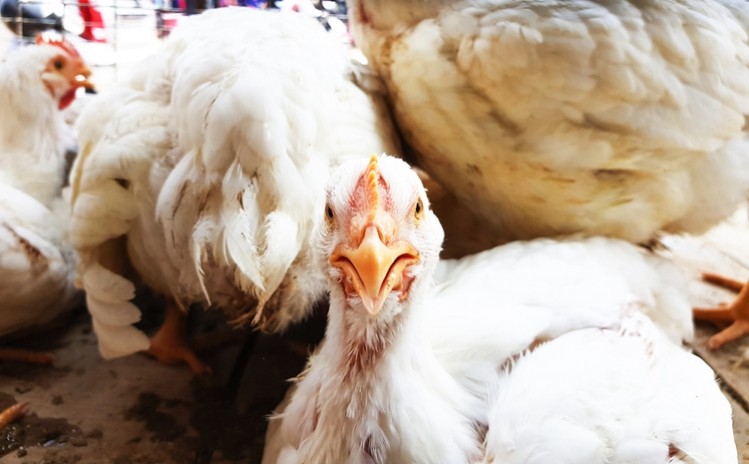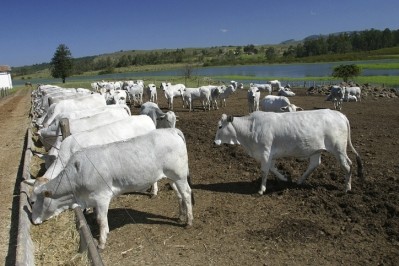Alternatives sought to fishmeal use in broiler feeds in developing markets

An international team of researchers from Ghana and the US explored swapping fishmeal in broiler diets with soybean meal or poultry by-product meal in regard to bird development and feed cost. The study was published in the Journal of Applied Poultry Research.
In some developing countries, fishmeal is considered and used as a traditional protein source for broiler diets, the researchers said. However, the cost of the feed ingredient can be volatile based on supply and global demand.
Fismeal is typically used because it includes digestible crude protein and essential amino acids along with fat, vitamins and minerals, they said. It is often blended with a vegetable protein like rapeseed meal, canola meal or soybean meal.
“Researchers have demonstrated that including fishmeal in balanced broiler diets resulted in better growth performance,” they said. “However, limited availability in recent years, lack of uniformity, and higher cost relative to plant sources have limited its inclusion in broiler diets.”
In addition, the use of fishmeal can add a fish smell and flavor to bird meat and eggs, they said.
Previous research has explored the use of plant proteins to replace fishmeal in broiler diets, the researchers said. The work looked at alternatives including groundnut meal, cottonseed meal, full-fat soybean meal, canola meal, leaf protein concentrates and rapeseed meal.
“Soybean meal has the highest feeding value among plant protein sources due to both its high protein content and essential amino acids needed to meet the nutrient requirements of poultry,” they said.
Soybean meal’s amino acid profile allows it to balance many “cereal-based diets” and it has some similar nutritional components to fish meal, they said.
“In developing countries, locally produced SBM may contain anti-nutritional factors (ANF) such as trypsin inhibitors and phytic acid that result in poorer growth performance, which may limit its inclusion in broiler diets as a major protein source in some developing countries,” the researchers said. “However, the issues of ANF in locally produced SBM can be eliminated or minimized by proper thermal processing making this concern less important.
“Unlike fish meal, soybean meal is less expensive and available year-round making it a more accessible protein source for poultry production,” they added.
Similarly, poultry by-product meal (PBM) is an available protein meal that has been used in aquaculture feeds and monogastric diets, they said. “However, its nutritional composition will vary based on the raw materials being processed at the rendering facility, its protein composition, and protein digestibility is comparable to fish meal.”
More information is needed regarding the influence of replacing fishmeal in broiler diets with soybean meal or PBM on broilers and the cost of production, they said.
Feeding trial details
In the 42-day feeding trial, 900 broiler chicks received one of three diets, the researchers said. Diets were feed in a three-phase regime covering starter, grower and finisher phases.
The diets included a control with blended fishmeal and soybean meal, a diet with only soybean meal (SBM) and a diet with a combination of soybean meal and poultry by-product meal (PBP), they said. “Diets were balanced for lysine and fed in mash form,” they added.
Pen body weight and feed disappearance were recorded on days 14, 28 and 42 of the trial, they said. Mortality was noted daily.
The feed conversion ratio (FCR) was calculated along with average daily feed intake (ADFI) and the adjusted FCR (AdjFCR), they said. Feed costs per kilogram of bird gain were also determined.
Results
Throughout the feeding trial, birds on the diets with only SBM or blended SBM and PBP were heavier than birds on the control diet, the researchers said. Mortality was 2.1% during the trial but it was not linked to diet.
“At days 14, 28, and 42, BW of birds fed SBM and PBM diets were greater than those fed FM diets,” they said. “Birds fed SBM and PBM had similar BW [bodyweight] throughout the study.”
ADFI was higher for birds on the SBM on days 14, 28 and 42, they said. Although the ADFI of birds receiving the fishmeal or the PBP diets were similar by day 42 and the ADFI for birds receiving the two alternative diets was similar throughout the length of the trial.
“At days 14 and 28, AdjFCR of birds fed FM diets was poorer than birds fed SBM and PBM diets,” they said. “AdjFCR of SBM and PBM fed birds were similar at 14 and 28 d,” they said. “However, at day 42, AdjFCR of birds fed diets containing the different protein sources was similar.”
The total cost for feed per kilogram of gain was higher for fishmeal diets - $1.75/kg – compared to soybean meal at $1.23/kg or PBM at $1.40/kg, the researchers said.
“The SBM diets had the lowest total feed cost per kilogram of gain,” they said. “Thus, replacing FM with either SBM or PBM significantly reduced total feed cost per kilogram of gain.”
Source: Journal of Applied Poultry Research
Title: Evaluating the Effect of replacing fishmeal in broiler diets with either soybean meal or poultry by-product meal on broiler performance and total feed cost per kilogram of gain
Authors: N.S. Frempong, T.N.N. Nortey, C. Paulk, C.R. Stark
DOI: doi.org/10.3382/japr/pfz049












